Christine Valters Paintner's Blog, page 82
March 23, 2019
St. Gobnait and the Place of Her Resurrection (new poem video) ~ A Love Note from Your Online Abbess
St. Gobnait and the Place of Her Resurrection
On the tiny limestone island
an angel buzzes to Gobnait
in a dream, disrupts her plans,
sends her in search of nine white deer.
She wanders for miles across
sea and land until at last
they appear and rather than
running toward them
she falls gently to wet ground,
sits in silence as light crawls across sky,
lets their long legs approach
and their soft, curious noses surround her.
Breathing slowly, she slides back
onto grass and clover and knows
nothing surpasses this moment,
a heaven of hooves and dew.
Is there a place for each of us,
where we no longer yearn to be elsewhere?
Where our work is to simply soften,
wait, and pay close attention?
She smiles as bees gather eagerly
around her too, wings humming softly
as they collect essence of wildflowers,
transmuting labor into gold.
Dearest monks, artists, and pilgrims,
When I moved to Ireland I was familiar with some of the saints like Brigid, Patrick, and Kevin. One of the true delights of living here is being introduced to the many holy figures who lived on this land, who sought the sacred, and worked to serve others.
One of the saints who has most captured my imagination is St. Gobnait. I have been to the two holy sites dedicated to her, one is a tiny stone chapel on the island of Inisheer where she first lived as a hermit. Then later she was called by a dream to seek the place of the nine white deer and create a monastery there. This place is in Ballyvourney, County Cork and is another beautiful site with a huge statues of Gobnait, old stone church buildings, a grave purported to be of her remains, and a holy well. Her story brings together some of what I love about the Celtic tradition – the way that dreams are honored as a sign from God, a call to something new, and the way that animals are considered to be signs of the sacred presence – dreams, signs, symbols, nature, animals all play a significant role in how the early Celtic monks discerned their callings. Gobnait is also the patron saint of bees, another lovely connection as honey has strong healing properties and evokes the sweetness of life.
Soon after I wrote the poem above, I came to know of a wonderful musician named Simon de Voil, who is originally from Scotland and spent time on Iona, and now lives in Port Townsend, WA, not too far from where I lived in Seattle. I fell in love with many of his songs – versions of Deep Peace (based on an old Celtic blessing), Be Still (that amazing psalm), and the Prayer of St. Francis. I shared with him some of my poems to see if he might be inspired to write a song based on one of them. It was a new experiment for me in collaboration with a musician. He was inspired by Gobnait’s story as well, felt a strong kinship to the deer which called to her, and ended up writing a song based on my poem.
I love this song because it takes me on an inward journey through the poem’s story in a way that just reading it doesn’t seem to capture. Then as we moved into this poem video series I knew I wanted this song included.
I invite you to read over the poem slowly, let the story find a place within you to settle. Then play the video below, you could close your eyes and just listen to the song itself at first, and then play it again, this time taking in the images. If the images don’t work for you, stay with what does. This is all a creative experiment! I am so grateful for the many artists with whom I get to work and play.
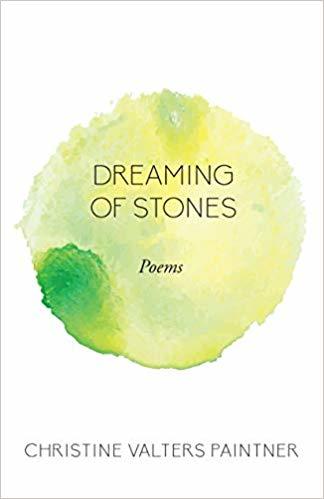 My collection of poems, Dreaming of Stones, was published this week in the U.S. (coming to other countries very soon!) If you go to this link you can find different ways of ordering a copy for yourself. I would be most grateful for and honored by your support.
My collection of poems, Dreaming of Stones, was published this week in the U.S. (coming to other countries very soon!) If you go to this link you can find different ways of ordering a copy for yourself. I would be most grateful for and honored by your support.
With great and growing love,
Christine
Christine Valters Paintner, PhD, REACE
Photo © Christine Valters Paintner
March 19, 2019
Featured Poet: Susan Millar DuMars
We are launching a new series this spring with poets whose work we love and want to feature!
Our next poet is Susan Millar DuMars whose work is deeply inspired by the fragility of the human body and the yearning for God. You can hear Susan reading her poem "Undiscovered" below and read more about the connections she makes between poetry and the sacred.
https://abbeyofthearts.com/blog/wp-content/uploads/2019/03/Susan-Millar-DuMars-Undiscovered.mp3
Undiscovered
We lie together quietly
in our big boat of a bed.
His toenail, kneecap, hipbone,
the warm, wet tang of him.
The familiar soft spell
of his voice. Now that I’ve seen death,
I don’t know how anyone
can think there’s a God.
I see what he is seeing:
the final clench of jaw, the last
mute struggle, the leak of colour
starting at the hairline.
The way the lips fall open,
dumb. The nurse tucks a rolled cloth
beneath the chin to close the mouth.
We’re machines, we break down.
Nothing more. Nothing else.
I remember her body
just after – shrunk,
the skin a new skin,
cold and slack as a white sail
on a windless day.
Something had gone. Though we can’t
see the breeze, we know when
it stops blowing. Something had gone.
I only want to know what it was.
Poetry and the Sacred
I was raised to believe in God, but as an adult my faith has taken some pretty hard knocks. Yet there is a shy, soft part of me that still wants desperately to believe. I am protective of this part, because I imagine it is precisely this – this sense of humility and wonder, this wish to emphasise that which connects us over that which distinguishes us, one from another – this is faith, and this is also the mindset from which poetry is born.
Poems slow us down. Their rhythm and repetition, the beauty of their sounds make us want to repeat them, like chants, like prayers. So the words enter our hearts. There is something Godlike in writing a poem, for by naming things we in a sense bring them into existence. But poems also do the opposite; they remind us how small we are, tiny integral parts of the whole. Is not that part of our yearning for God – our need to feel part of something larger than ourselves?
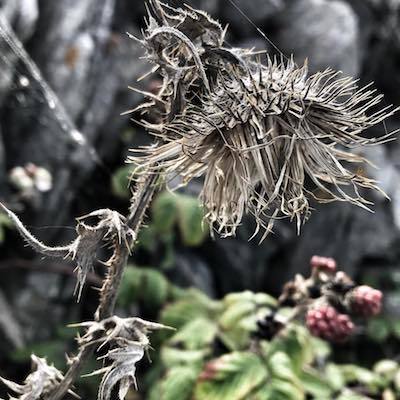
Themes of Her Work
I’ve just put together the manuscript for Naked: New and Selected, due out from Salmon Poetry in March 2019. This book celebrates my twenty five years as a published poet, so I had to read through all those old poems again. I was surprised how loyally I’ve stuck to the same themes over those years. One of these is the fragility of the human body: the phases of our lives, our ideas of beauty, sex (usually playful poems), and then letting go. What happens when we leave our bodies for the final time? Then the God poems. Does He exist, and in what form?
If He doesn’t, then for what am I yearning?
Sunday Morning, Lorient
There’s a man wiping down the carousel
as if it’s the only thing that matters.
Beneath his white rag flattered panels
blush and flash like fallen sections of sky.
There’s an old man up on his balcony
wrapped like something precious in his white robe.
He’s looking at the church across the square.
The air so still he can hear the choir.
A pine cone rattles to the cobbles.
Jackdaws, and the warm wood of this bench
expanding as though with breath.
Small white roses grow on the square,
their fluttering faces like candles.
I need no other cathedral.
In Bed With Anne Sexton
The poem’s not the polish
but the nail
you tell me, your fine-boned feet
in my hair.
My pillow hot.
You’re laughing with your
whole body, clavicle and hips,
thorn nipples, syrup eyes
bright at the foot of my bed.
Ask yourself why
you dream me upside down.
Am I Chaos? you ask.
You’re honest, I answer,
as a fishhook.
You tear the long white beard
off God,
teach me to be naked.
Honesty equals chaos.
Liars are tidy
and the mad walk
in muttering circles.
When I tell the truth
I don’t know what will happen.
Help me, Anne.
But you’re gone
in morning’s milk-light, except
for your chuckle that I feel
beneath my ribs;
your voice calling help yourself, honey.
Help yourself.

About Susan
Susan Millar DuMars has published four collections with Salmon Poetry, the most recent of which, Bone Fire, appeared in 2016. Bone Fire was nominated for the Forward Prize and has been featured on RTE Radio One’s Arena and The Poetry Programme. She also writes short fiction. Susan lives in Galway, Ireland where she and her husband Kevin Higgins teach creative writing and have coordinated the acclaimed Over the Edge readings series since 2003. Susan’s next collection, Naked: New and Selected Poems will be published by Salmon in Spring, 2019.

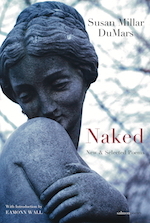
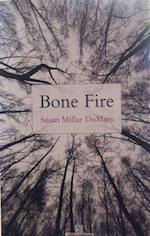
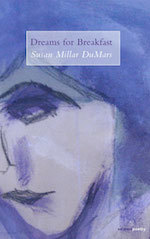
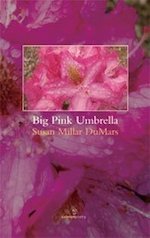
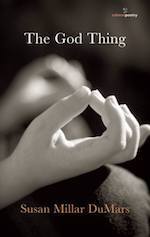
Order Susan Millar DuMars' Books
Naked: New and Selected Poems - due out in late March 2019

Dreaming of Stones
(available to pre-order)
Christine Valters Paintner's new collection of poems Dreaming of Stones will be published by Paraclete Press this March.
The poems in Dreaming of Stones are about what endures: hope and desire, changing seasons, wild places, love, and the wisdom of mystics. Inspired by the poet’s time living in Ireland these readings invite you into deeper ways of seeing the world. They have an incantational quality. Drawing on her commitment as a Benedictine oblate, the poems arise out of a practice of sitting in silence and lectio divina, in which life becomes the holy text.
[image error]

March 16, 2019
The Feast of St. Patrick and the Spring Equinox ~ A Love Note from Your Online Abbess
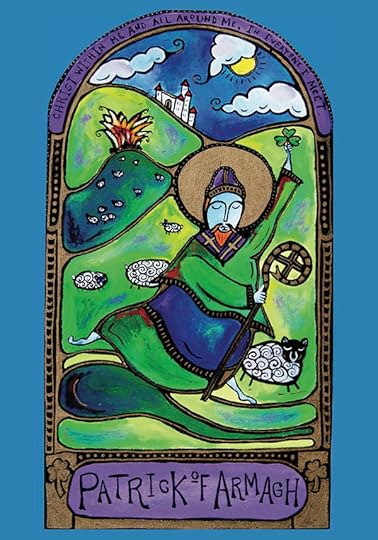 Holy Mountain*
Holy Mountain*
I want to climb the holy mountain
ascend over weight of stone
and force of gravity, follow the
rise of a wide and cracked earth
toward eternal sky,
measured steps across the sharp path,
rest often to catch my heavy breath.
I want to hear the silence of stone and stars,
lie back on granite's steep rise
face to silver sky's glittering points
where I can taste the galaxies
on my tongue, communion of fire,
then stand on the summit and
look out at the laboring world.
I want to witness earth's slow turning
with early light brushing over me,
a hundred hues
of grey, pink, gold,
speckles of Jackson Pollock light,
then ribbons of mist floating
like white streamers of surrender.
I want to look back down the trail
as if over my past, forgive a thousand tiny
and tremendous transgressions
because now all that matters
is how small I feel under the sky,
even the sparrowhawk takes no notice of me,
how enlarged I feel by knowing this smallness.
I want to be like St. Patrick,
climb the holy mountain full of
promise and direction and knowing,
forty days of fasting aloft among clouds
until my body no longer hungers
and something inside is satisfied
and my restless heart says here,
no longer dreaming of other peaks.
—Christine Valters Paintner
*This poem first appeared in The Galway Review
Dearest monks, artists, and pilgrims,
The wilderness and the dry land shall be glad, the desert shall rejoice and blossom; like the crocus it shall blossom abundantly, and rejoice with joy and singing.
—Isaiah 35:1-2
I believe deeply that the seasons have a great deal of spiritual wisdom to offer us if we make space to listen. They teach us of the cycles and seasons of the earth and of our own lives. We are invited into the movements of blossoming, fullness, letting go, and rest, over and over again. Just like the lunar cycles of the moon's waxing and waning, so too does the body of the earth call us into this healing rhythm.
The spring equinox is on March 20th when the sun hovers above the equator, and day and night are equal length. This is considered the New Year in Persian tradition as well as the astrological calendar. Spring is a time of balance, renewal, and welcoming new life into the world.
As the northern hemisphere enters the season of blossoming we are called to tend the places of our lives that still long for winter's stillness as well as those places ready to burst forth into the world in a profusion of color. It takes time to see and listen. Around us the world is exploding in a celebration of new life, and we may miss much of it in our seriousness to get the important things of life done.
Poet Lynn Ungar has a wonderful poem titled "Camas Lilies" in which she writes: "And you — what of your rushed and / useful life? Imagine setting it all down — / papers, plans, appointments, everything, / leaving only a note: "Gone to the fields / to be lovely. Be back when I'm through / with blooming." Spring is a time to set aside some of the plans and open ourselves to our own blooming.
There is a playfulness and spontaneity to the season of spring that invites us to join this joyful abandon. As the poet Hafiz writes, spring is a time for singing forth and celebration. We are called to both listen deeply to the blossoming within ourselves as well as to forget ourselves — setting aside all of our seriousness about what we are called to do and simply enter the space of being. In this field of possibility we discover new gifts.
On my daily walks I have seen clusters of crocuses thrusting themselves out from the ground into the brilliant sunlight. The branches of cherry trees begin to hum, preparing to burst forth. Small shoots are pressing outward, anticipating their explosion into a pink spectacle of petals. And in my presence to this dynamic energy I discover places within me humming and bursting forth. I notice my own deep longings wanting to emerge in vibrant ways.
The fertility and flowering of spring speaks of an abundantly creative God who is at the source of the potent life force beating at the heart of the world. Created in God's image, we are called to participate in this generous creativity ourselves. Our own flowering leads us to share our gifts in service to others.
In the Hebrew Scriptures the promise of God's abundance is often conceived of as blossoming in the desert. In that harsh landscape, a flower bursting forth from the dry land is a symbol of divine generosity, fruitfulness, and hope. Hope is a stance of radical openness to the God of newness and possibility. When we hope, we acknowledge that God has an imagination far more expansive than ours.
Six weeks ago we were tending the very early signs of earth’s belly rumbling with this activity beneath the ground. Depending on where you live, you may have felt and seen it, or it may have still been a distant dream.
What are you seeing around you? What are you feeling within?
(This reflection was excerpted from our Sacred Seasons online self-study retreat)
With great and growing love,
Christine
Christine Valters Paintner, PhD, REACE
P.S. Our southern hemisphere dancing monks can find a reflection on the autumn equinox at this link>>
Photo © Marcy Hall at Rabbit Room Arts (prints are available in her Etsy shop)
March 12, 2019
Monk in the World Guest Post: Michelle Kobriger
I'm delighted to share another beautiful submission to the Monk in the World Guest Post Series from the community. Read on for Michelle Kobriger's reflection on the artist and beginning again.
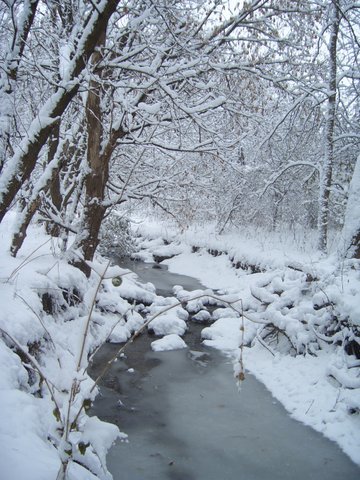 Winter came on hard and fast this year, the colorful autumnal display fading quickly to brown. Days of wind and rain stripped the trees, carpeting my favorite woodsy trail in a thick layer of crunchy leaves. Tromping down the path a day after heavy rains, showers of acorns plopped to the ground like fat raindrops as squirrels scurried to gather the bountiful harvest. I don’t know what it would be like to live in a climate of perpetual green. I’d miss the changing seasons — earth’s way of reminding us life is cyclical, change is constant, routines are meant to be adjusted.
Winter came on hard and fast this year, the colorful autumnal display fading quickly to brown. Days of wind and rain stripped the trees, carpeting my favorite woodsy trail in a thick layer of crunchy leaves. Tromping down the path a day after heavy rains, showers of acorns plopped to the ground like fat raindrops as squirrels scurried to gather the bountiful harvest. I don’t know what it would be like to live in a climate of perpetual green. I’d miss the changing seasons — earth’s way of reminding us life is cyclical, change is constant, routines are meant to be adjusted.
The path of an artist and monk in the world asks us to live close to the earth with reverence for God’s creation; appreciating earth’s wisdom and the gifts she offers to nourish, teach, and delight. In winter, she offers an invitation to slow down; take time to rest and regroup. For me, it’s a time to revel in steamy mugs of tea, long hot baths, and a crackling fire in the fireplace with our cat Benny cuddled beside me. A time to delight in the red flash of cardinals in the birch tree, bare branches transformed to crystalline sculpture, and snowflakes glittering like fairy dust in frigid air.
In my studio, winter affords time to take stock of unfinished projects and abandoned ideas, mindful of Saint Benedict’s advice — I wonder if he was thinking of artists when he said, “Always we begin again.” I wonder if a long deep sigh preceded those words, if they were accompanied by a patient smile, or if there was a hint of exasperation because artists can be so mercurial, so messy: resisting structure, questioning the status quo, asking why, what if, and breaking rules. Good intentions toward discipline and daily practice go up in smoke when the Muse crooks her finger, whispering your name
You might end up with a studio splattered in ink, or a kitchen awash in cake batter and mounds of dirty dishes. There might be stacks of unfinished canvases, half-finished manuscripts, and surfaces littered with the tools and supplies you purchased after a workshop but forgot how to use. Maybe a fabulous dessert recipe destroyed your good intentions toward healthier eating. I like to believe Benedict understands that no matter how many times we try to begin again, the discipline of a daily practice can devolve into an exercise in cat-herding as competing demands for time and attention tug us in different directions. He kindly offers his rule to bring us back on course — again, and again.
In summer, I’m easily distracted by calls to be outdoors. Living in Wisconsin, you can’t help but develop a profound appreciation for the loveliness of warm sunny days. The long hours of daylight call me outside for morning walks and evening walks, followed by strolls through the garden to watch fireflies winking in the bushes. The calendar fills with travel and social events and I lose my place with creative projects. I’m always a little relieved when hints of yellow ochre mute the deep blue-green hues of the summer tree canopy. When the red and orange tones appear and the farmers market bursts with the fullness of the harvest, it’s time to take a deep breath and remember — not only is it okay to begin again, it’s expected and encouraged.
The monk is called to practice radical hospitality — a rule we can apply to the more undisciplined aspects of our bohemian nature.
We’re often the ones standing on the edges where we can see the wider view or the nuanced shades of a situation. We tend to listen more than we speak — but we aren’t afraid to ask questions, or question our assumptions.
The artist’s eye, attuned to the myriad grey tones in pebbles on the shoreline might notice the drooping shoulders and the brave smile that fails to light the eyes of a friend in need of encouragement.
The artistic traits resulting in failure at discipline help us follow Spirit’s nudges to divert from the usual route — nudges that might lead to someone needing a kind word, a bit of advice, or a helping hand. Adjustments to the day’s schedule can always be made when a friend needs help.
I like to think Benedict sees the positive side of our unconventional traits, encourages us to welcome and appreciate them, and congratulates us for the courage to show up for our work.
When we give ourselves permission to begin again, we recognize the value of process over end product and affirm that time spent outside the studio is fundamental to our process. Every season comes with its own brand of magic. Our work is to bring presence to the world we inhabit — in all its beauty and tragedy — to see all the colors in the sunset, hear every note in the birdsong, feel the love and despair of those who walk with us in life.
Then with hands, heart, the tools of our craft, and the grace to begin again, we offer a response.
 Michelle Kobriger is a metalsmith and mixed-media artist. At her home in Waukesha, Wisconsin, cooking, gardening, and homemaking offer endless opportunity for creative expression in the spirit of Oscar Wilde’s words: “Life has been your art. You have set yourself to music. Your days are your sonnets."
Michelle Kobriger is a metalsmith and mixed-media artist. At her home in Waukesha, Wisconsin, cooking, gardening, and homemaking offer endless opportunity for creative expression in the spirit of Oscar Wilde’s words: “Life has been your art. You have set yourself to music. Your days are your sonnets."
March 9, 2019
Connemara Illuminated (new poetry video) ~ A Love Note from Your Online Abbess
Connemara Illuminated
A poem is being scribed this morning
across the thick brown bog and
over the gashed granite folds of mountain,
written in spires of gold descending
from the wide bowl of sky
across the breathing heather.
You have to pause to read it,
long enough to hear beneath the relentless
moan of wind
where centuries of voices have whispered
their seeking, feasting, fasting, loving.
You know your singular aloneness
and your place in a communion of stone and sea.
Even as the kestrel’s wings vibrate into the night
sending quills into the damp air,
even as the skylarks and stonechats
attend each day’s awakening
like eager midwives,
this empire of longing writes its script
in fox tracks and memory.
If your life could be just a fraction of this poem
you would never need to utter another word.
—Christine Valters Paintner
(This poem first appeared in Tiferet Journal)
Dearest monks, artists, and pilgrims,
I am delighted to share another poetry video created by the wonderful Galway-based Morgan Creative. We live just a short drive from the Connemara region and I love this landscape of granite mountains, bog, heather, and sea. It is a very elemental place where the wind howls in winter and strips away anything you might be holding onto too tightly. It is one of my favorite places to go for a hike or just spend some time in meditation along the shoreline.
The poem takes its inspiration from the ancient art of illuminating manuscripts. I love those painstakingly designed texts where monks would bring in image to help deepen the meaning. Illumination referred to the gold that was added to various designs to create a sense of light shining through. Often when I am standing by a wet field in Ireland after a rainy morning, and suddenly the sun breaks through and the field is shimmering and sparkling with light, I imagine that those ancient monks were trying to capture that moment in their work on the manuscripts.
One day while out in the wilds of Connemara, on a day when light and shadow were playing against each other, I began to imagine the land itself as a manuscript that had been illuminated by a divine hand. Then I thought about how my life is also a poem illuminated by unseen forces in the world. “You have to pause to read it” I write in the poem above, how often in our rushed and useful lives do we pause to appreciate the sacred text that is the world, crying out to be read, to be savored?
I invite you to pause now and pour a cup of tea, then give yourself two minutes to watch the video below which includes some gorgeous footage of the Connemara landscape to accompany my reading of the poem:
 Feel free to share the video if you feel so inspired. My collection of poems, Dreaming of Stones, is being released in the next several days. If you go to this link you can find different ways of ordering a copy for yourself. I would be most grateful for and honored by your support. And if you feel inspired by sacred poetry to join me in Chartres, France this summer check out this webinar we just recorded to provide you with more details to discern if the experience is calling to you.
Feel free to share the video if you feel so inspired. My collection of poems, Dreaming of Stones, is being released in the next several days. If you go to this link you can find different ways of ordering a copy for yourself. I would be most grateful for and honored by your support. And if you feel inspired by sacred poetry to join me in Chartres, France this summer check out this webinar we just recorded to provide you with more details to discern if the experience is calling to you.
With great and growing love,
Christine
Christine Valters Paintner, PhD, REACE
Photo © Christine Valters Paintner
March 5, 2019
Featured Poet: Roselle Angwin
We are launching a new series this spring with poets whose work we love and want to feature!
Our next poet is Roselle Angwin whose work is deeply inspired by wild places and the natural world. You can hear Roselle reading her poem "River Suite" below and read more about the connections she makes between poetry and the sacred.
https://abbeyofthearts.com/blog/wp-content/uploads/2019/03/07-River-Suite.mp3
from I Colum Cille: St Columba’s Isle
iv Why we stayed
It’s the glass-blue day
it’s the way light inhabits
the creases, smears colour
that steals your breath.
It’s the unbidden moment
that spells dolphin, otter, seal.
It’s the islands we come to
the islands we’re not.
It’s the white glyphs
that scribble the swell
in the Sound, and the bucking boats
that yield, and do not sink.
It’s the sand so pale
it might be grains of light.
It’s the big Hebridean night
that opens its arms
and drops its creels of stars
towards our upturned faces.
~ Roselle Angwin, A Trick of the Light: poems from Iona
Poetry and the Sacred
Poetry, for me, is essential practice, in both senses of the word ‘essential’: something about peeling away the layers to reveal essential nature under all our habits, roles and conditioning. Significantly, it offers entry into a more subtle dimension, mediating between worlds: between unknown and more familiar aspects of ourselves; between ourselves and another; between ourselves and the rest of the natural world. It’s a ‘slender thread’, a connecting thread, that continues to keep us alive when all about us seems to be descending into ruin.
The best poetry is transcendent, and always ‘plugs me in’: enables reconnection to the whole, remembering that everything is interconnected.
So I go to poetry to reach beyond ego; to be part of the great family of all-that-is.
As sacred practice, poetry takes me beyond the transient. Poetry transports me, simultaneously bringing me instantly and entirely present through the poem to this moment, this light rain on the skylight, the buzzard that just glided past, daffodils bravely pushing green spikes from hard dark earth – the courage of everything, the cycles, the joy; despite war, poverty, climate change, species’ decline. Heaven on earth. It’s a reminder that there is always beauty and presence, and we’re all in it together.
Themes of Her Work
My latest poetry collection comes from the Isle of Iona, where I lead annual retreats. It’s very much about the sacred within nature. My work is predominantly about our relationship with and reconnection to each other and the other-than-human, and the urgency of our need to find a better way to be with the others who share our planet. I’m utterly passionate about animals, birds, plants, trees, rivers and so on. Most of my courses and writings now have this focus, and I’m currently leading a yearlong ‘Tongues in Trees’ course with the aim of making people’s connection more conscious.
Doublewaters
You could have been squatting here forever
almost grown into bank, or become another
rippling ring of light on the dark river.
Twigs have roosted in your hair; your hands
river-stone-cold. Breath feathers the last of the day.
Where do we go each time we close behind us
the door of the present moment? Who
steps forward and who is left behind?
Who still squats by the water when you’re
long gone into tree, or bird, or sand?
~Roselle Angwin, Looking For Icarus
Almost a Prayer
After we’d trudged so far to the pass at the top
of the island, rain and wind beating our faces,
rising like a single uncluttered thought
from the lochan’s dark mouth a pair of swan,
whoopers, passing through to Siberia,
their curd-white a thickening, a measure
of silence hefted against grey air,
their presence an act of grace, almost a prayer.
~ Roselle Angwin, appears in both All the Missing Names of Love and A Trick of the Light: poems from Iona
About Roselle
Poet, author, mythologian and counsellor Roselle Angwin has been leading the holistic ‘Fire in the Head’ creative and reflective writing programme for 28 years on Dartmoor, in Cornwall, on the Isle of Iona and in France. As an eco-writer and eco-psychologist, she also leads ‘The Wild Ways’ outdoor workshops and retreats. Her eleven books include poetry, novels and creative non-fiction.
She’s passionate about wild places and the natural world, as well as the meeting points between inner and outer geographies: imagination, relationship, connection, land. She has been described as ‘a poet of the bright moment... whose own sources of creative inspiration are her native Westcountry, the Scottish islands, and a highly individual blend of Celtic myth and metaphysics, psychology, shamanic and Buddhist thinking’.
Roselle-Angwin.co.uk
TheWildWays.co.uk

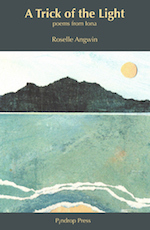
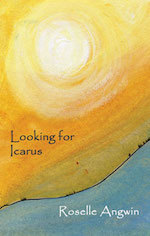
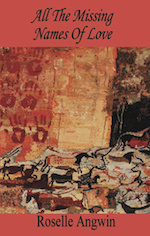
Order Roselle Angwin's Books
A Trick of the Light: poems from Iona
Roselle is the author of a number of other works of poetry, fiction, and creative non-fiction.

Dreaming of Stones
(available to pre-order)
Christine Valters Paintner's new collection of poems Dreaming of Stones will be published by Paraclete Press this March.
The poems in Dreaming of Stones are about what endures: hope and desire, changing seasons, wild places, love, and the wisdom of mystics. Inspired by the poet’s time living in Ireland these readings invite you into deeper ways of seeing the world. They have an incantational quality. Drawing on her commitment as a Benedictine oblate, the poems arise out of a practice of sitting in silence and lectio divina, in which life becomes the holy text.

March 2, 2019
7 Pilgrimages You Can Go on Right Now (Part 2) ~ A Love Note from Your Online Abbess
 Dearest monks, artists, and pilgrims,
Dearest monks, artists, and pilgrims,
There are many ways to practice pilgrimage. You can journey far away to a sacred site, but there are also options within reach of a walk or drive from home, or even within your own imagination. Here are some suggestions:
Make a memory pilgrimage
This invitation is to make a pilgrimage through your memories and can be done sitting or lying down at home. The practice is inspired by St. Ignatius of Loyola’s Examen. Spend time in preparation by looking through old photos. Begin by reading Luke 2:19, where it says, “Mary treasured all these words and pondered them in her heart.” This is a pilgrimage of pondering.
Then find a quiet space, slow down your breathing, and drop inward into your imagination. Reflect back on your life and imagine that you are walking through each decade as if on a physical pilgrimage. Honor the journeys you have made. Pay attention to those moments of grace and ease when you felt a profound sense of consolation and love in your life. Let each God-kissed moment rise up, and spend time savoring it and offering a prayer of gratitude for it.
Then shift your awareness and walk through your memories again. This time pay attention to those moments of challenge and discomfort, perhaps even desolation. Let each moment rise up, and honor its role as part of your life story. See if there is anyone you would like to forgive for this experience, including yourself. Ask for God’s companionship in this journey of tenderness and remembering.
To complete the experience, bring your awareness back to the present moment and notice what you have discovered about yourself by remembering these times of both grace and challenge. Take some time to name the gifts of this pilgrimage of memory.
Make a friendship pilgrimage
Choose three friends to visit and schedule time with them, either all in one or three days in a row. Let this be a time of reflection on the gift of friendship in your life and all the ways friends of various kinds have supported you over the years. Consider bringing each of these friends a small gift that symbolizes how they enrich your life or that represents a special shared memory. Spend time together talking about the pilgrimage of each of your lives and how you have become woven together through time. Ask for support and prayer in a situation of your life and ask how you can support your friend as well.
Begin your time of pilgrimage by reading the story of the visitation (Luke 1:39–45), when Mary goes to see her cousin Elizabeth, or the story of David and Jonathan’s friendship (1 Sam. 18:1–4). Ask that your time with friends be blessed as a journey of the heart and that you might make new discoveries together about how God is calling you to be in support of one another.
Peregrin atio
The ancient Irish monks had a very unique approach to pilgrimage. They would set out on a journey for Christ, often by boat without oar or rudder, and let the currents of divine love carry them to the place of their resurrection. This is the place where their gifts and the needs of the community came together and they were able to serve fruitfully.
Instead of a literal journey by boat, you can work with the spirit of this pilgrimage experience by going for a contemplative walk without destination. Begin your pilgrimage by reading the story of Abraham and Sarah being called to leave their homeland in search of a new country (Gen. 12:1–2). Bless this time and release any desire for a goal or outcome. Take some deep breaths to center yourself and see where your feet take you. You aren’t trying to get anywhere, just to be present moment by moment to the call of the Spirit. See where your attention is drawn, pause often, and linger.
Cultivating this as a regular practice helps us to open up to peregrinatio in our daily lives when we are called to release our grasp on the life we think we need and open to the sacred possibilities being offered to us.
Life as pilgrimage
Life itself offers up many opportunities to embark on a pilgrimage journey. Sometimes these are events that don’t feel very welcome in our lives, such as illness or loss of a job or a relationship. When something challenging arises in your life, embrace the perspective of a pilgrim as a way of meeting it in a new way.
Begin your reflection by reading from the Book of Job 38:4–7, which begins with God’s question to Job, “Where were you when I laid the earth’s foundation?” and ends with God’s laying of the cornerstone “while the morning stars sang together and all the angels shouted for joy.” Taking a pilgrim’s perspective means that in the midst of struggle we search for ways to see how we might be stretched open to new images of God. We might discover the divine abiding with us in ways we hadn’t considered before, through the presence of friends, family members, or companion animals, through silence and meditation, or through being called to pare down your life commitments.
This article also appears in the July 2018 issue of U.S. Catholic (Vol. 83, No. 7, pages 12–17).
Please join us for our Lenten online retreat as we journey through my book The Soul of a Pilgrim together in community. Our pilgrimage begins tomorrow!
With great and growing love,
Christine
Christine Valters Paintner, PhD, REACE
Photo © Christine Valters Paintner
February 26, 2019
Monk in the World Guest Post: Michele Chung
I am delighted to share another beautiful submission to the Monk in the World guest post series from the community. Read on for Michele Chung's reflection "Discovering the joy of God."
"I tend to be somewhat melancholy, which means I usually see the glass as half empty rather than half full. When I’m alone, the negative emotions often rise to the surface. This personality trait has been a challenge in my contemplative practices. The more time I spend in solitude and introspection, the easier it is for me to sink into my negativity.
Recently, my exercise app challenged me to laugh 3 times a week, and I became more aware of those moments where things really tickled my heart. When I stopped to pay attention and be mindful during those times of joy, I was surprised to encounter a deep sense of peace and clarity.
I found that it was almost impossible for joy and anxiety to co-exist. Maybe that’s why kids laugh so much more than adults. As we get older, the responsibilities and worries of life creep in, and squeeze out our joy. During those moments of joy and laughter, I forgot about my worries and concerns. My heart felt lighter just because I laughed at a silly joke. Laughter and joy also changed my perspective. I noticed that when I was in distress, laughter will often jolt me out of my downward spiral into negativity. And as I breathe a sigh of relief, the Spirit reminds me that life is not so hopeless and grim after all.
For most of my spiritual life, my image of God was a stern one. God may not be an angry God, but he was definitely serious. The first few years when I started to pray in intercession, I often wept as part of my prayers. I could relate to a suffering Christ, but a Jesus who laughed in joy? He was foreign to me. Nevertheless, as I became more mindful of the joyous events during my day, I became more grateful for the gift of laughter in my life.
I looked up scriptures about joy, and was surprised at how often joy was mentioned. David wrote many psalms about rejoicing and having joy in God’s presence. Apostle Paul encouraged people to rejoice regardless of their circumstances. One theme I see repeatedly was that joy was often connected with God or the presence of God. When Jesus was born, He was the reason that heaven and earth rejoiced. God seemed to be a source of great joy.
If joy is such a major part of who God is, how then do I incorporate rejoicing into my contemplative practices? How does one contemplate the joy of God? The first thing that came to mind was for me to keep a childlike heart. For when I welcomed the simple things in life, and stopped taking myself too seriously, I seemed to laugh a lot more often. When I gave myself more grace, I was more receptive to the divine touches and happy accidents that happened throughout the day.
In God’s presence, there’s fullness of joy. (Ps. 16:11) During my personal worship one night, this verse came to me again. Joy is connected to the presence of God. I started to focus my meditation time simply on who God is. I realized I needed to think differently. Instead of preferring to meditate on the sufferings of Jesus, I needed to also remember our God who is full of joy. In fact, God is One whose presence is filled with joy. Even in the midst of difficult circumstances, God is not surprised nor anxious. His work is finished. Because Jesus has gone through the deep anguish and affliction, we can now share in his joy. Joy is his gift to us.
Although I can still be a tad grey in my attitude, I’m much more intentional in opening my heart to joy. On some days, it means I need to learn to trust in order to focus on joy. At times, I have to protect my childlike heart and not allow cynicism to snuff it out. I’m definitely still a novice at discovering the joy of God. However, little by little, my image of God is changing. Now, I can see Jesus smiling at me in joy."
 Michele loves playing with colors and having deep conversations. She lives in Silicon Valley with her husband and a house full of books. You can find more of her writings at SabbathCafeBlog.com. She also shares her art on Instagram: @imagochele.
Michele loves playing with colors and having deep conversations. She lives in Silicon Valley with her husband and a house full of books. You can find more of her writings at SabbathCafeBlog.com. She also shares her art on Instagram: @imagochele.
February 23, 2019
St. Teresa’s Ecstasy (new poem video) ~ A Love Note from Your Online Abbess
Dearest monks, artists, and pilgrims,
To continue celebrating the upcoming release of my poetry collection Dreaming of Stones, I have another poem video for you this week. This poem, titled St. Teresa’s Ecstasy, was inspired by the statue created by Bernini which depicts a moment she describes in her autobiography of mystical communion. The poem video also takes its inspiration from this statue.
St. Teresa’s Ecstasy
You must have felt it
once or twice yourself
an early winter morning
as the sun tilts slowly
above the vale of earth
bird wings flap fiercely
slicing the sky as it turns
from lavender to blue
your heart a moth
fluttering in a jar
and for a moment you are
so in love with this world
everything is possible
your skin no longer barrier
but portal to communion
like St. Teresa in her moment
of ecstasy, Seraphim with a
golden spear clearing her out
for love, feet bare, head tilted back,
a moan escapes her lips,
rhapsody, relish, swoon
even when the angel recedes
as her tasks call her back
she can still taste bliss in her
pomegranate mouth
and there are glimpses of paradise
even on rain-soaked days
a sun still gleams
among the half-cut lemons,
the egg yolk, my wedding band.
—Christine Valters Paintner
 If you love poetry and want to see it thrive, I would be so grateful if you would consider pre-ordering a copy of Dreaming of Stones and sharing these poem videos with others. The book will be available in the U.S. March 19th. (Also see below for an opportunity to join me in Seattle for an evening of Celtic song, poetry, and dance on March 17th as well as a Sacred Poetry retreat in Chartres, France this coming June 10-14, 2019!)
If you love poetry and want to see it thrive, I would be so grateful if you would consider pre-ordering a copy of Dreaming of Stones and sharing these poem videos with others. The book will be available in the U.S. March 19th. (Also see below for an opportunity to join me in Seattle for an evening of Celtic song, poetry, and dance on March 17th as well as a Sacred Poetry retreat in Chartres, France this coming June 10-14, 2019!)
With great and growing love,
Christine
Christine Valters Paintner, PhD, REACE
Video © Christine Valters Paintner
February 19, 2019
Abbey of the Arts Featured Poet: Nita Penfold
We are launching a new series this spring with poets whose work we love and want to feature!
Our next poet is Nita Penfold whose work is currently themed around harvest. You can hear Nita reading her poem "Think of a Time When" below and read more about the connections she makes between poetry and the sacred.
https://abbeyofthearts.com/blog/wp-content/uploads/2019/02/Think-of-a-Time-When-Nita-Penfold.mp3
Think of a Time When
you were truly yourself, that age
before the mask was pulled tight
before the roles were welded like armor to your skin.
Remember the one thing you loved
above all else, that, given perfect freedom,
you could be found doing
when they looked for you to do something else,
something useful; the thing that made
you feel whole and hopeful,
full of something that lifted you out of yourself
but anchored you home
so that you didn't know where that thing began, where you ended,
so much were you in the river of it, the flow
of hand to heart and heart to soul,
that was all of one piece called you.
You know what it is. Remember it.
Hold it up like a shiny vintage ornament
turn it to and fro.
It is the true gift
just below your conscious thought, itching at you
to touch it once more.
Latch onto that feeling,
let the stillness find you and the wholeness
bubble up from the bottom of your stone well.
What might you do with it now?
©Nita Penfold
From Landing in Oz
Poetry and the Sacred
Poetry is about slowing down and capturing a moment and connecting that moment to something larger than itself, than yourself. The practice of writing poetry forces me to contemplate the world with a continually new lens that pushes open the boundaries of the sacred. I believe that our spirituality, the essence, the gift, of who we are, is deeply connected with our creativity, the expression of that essence into the world, whatever form it takes. I see these connections as the inner and outer, the yin and yang, the being and doing of life that spiral me deeper into the sacred as they lead me out of myself. I have always seen my work as a ministry of empowering others to find their spirit and express it openly in their lives, to guide them to an awareness of their own deep divine core and to give them the invitation, the permission, they need to play, create, and renew through the arts.
Themes of Her Work
Currently, the main theme in my work is harvesting. Since retiring, I have been exploring my life lessons and how these have contributed to my deep spirituality and creativity. I found this inner vegetation growing that I insisted were weeds at the time, but now have yielded magnificent blossoms and healing herbs that help me recognize the Divine in myself and others. My current project, Advice to Pilgrims, is an attempt to capture the parts of my journey that will help others, knowing that I can only describe one example, for no two paths are ever the same.
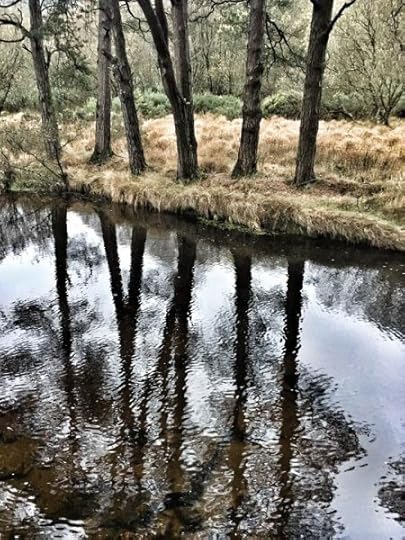
Oh Great Mystery of Being
Let my small story
connect to your larger one.
May we breathe with one breath.
May we make this day holy together.
©Nita Penfold
From Advice to Pilgrims
Calling
You wake to the honey
light before anyone else, perch
on the long wooden stair top,
wishing to be old enough to
drag the wide-bottomed boat
out alone, to command the creak
of oars, the water’s flash, to
steer to where the Buddha-frogs
nightly chant their steely croak,
where the water spiders stride
across the surface like complacent
miracles, where something calls
to you like the red-winged blackbird
clinging to the high reeds skirting
the lake and you want to purse
your mouth just so
and answer, yes,
yes.
©Nita Penfold
From They Stand Up in Broken Shells
About Nita
Nita Penfold has been writing poetry since the age of eight. She received her Masters in Writing from Lesley University in 1986 and her Doctorate in Ministry from Wisdom University in 2002. She taught spirituality and arts courses in the Worship and Theology Arts Department at Andover Newton Theological School and has led a variety of arts-based workshops for adults, youth, and children through SpiritArts. Her art has been exhibited throughout New England, and her poetry has been widely published for the past 35 years.
She understands the religious vocation as a call from the deepest center of consciousness to step forward into one’s Divine self, into the very center of the existential questions, and to dwell there, seeking and finding, seeking and finding in a one long spiral of growing awareness. To her, ministry then becomes the impulse to come up out of that authentic center with compassion and help others to listen to the call and respond in their own unfolding, which then effects change in the world. She does this ministry through spirituality and the arts in the context of Unitarian Universalist religious education of children, youth and adults and through the medium of poetry and visual arts.
Dr. Penfold is the wife of Nick Page, song-leader and composer, the mother of two daughters, and grandmother of three.
More information on her books and art is available at NitaPenfold.Weebly.com.

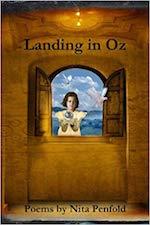
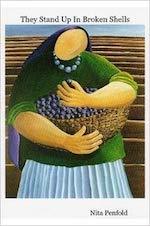
ORDER NITA'S BOOKS
They Stand Up in Broken Shells
(using the Amazon links above help to support the Abbey scholarship fund at no additional cost to you)

Dreaming of Stones
(available to pre-order)
Christine Valters Paintner's new collection of poems Dreaming of Stones will be published by Paraclete Press this March.
The poems in Dreaming of Stones are about what endures: hope and desire, changing seasons, wild places, love, and the wisdom of mystics. Inspired by the poet’s time living in Ireland these readings invite you into deeper ways of seeing the world. They have an incantational quality. Drawing on her commitment as a Benedictine oblate, the poems arise out of a practice of sitting in silence and lectio divina, in which life becomes the holy text.




